
23 minute read
SPECIAL FEATURE
[ by jill doczi ]
State of the
Advertisement
Much has changed in the industries of development, real estate, renovation and landscaping. We talked to some local industry experts to see how they have noticed and adapted to recent changes.
Development and Building
“In the last 24 months the ability to accurately schedule home construction and forecast costs have become the biggest challenges our building company has faced. Changes in material deliveries and costs with little or no notice is now commonplace, which is a stark contrast to the market in 2019,” said Robert Prodan, II, president, Home Associates of Virginia, Inc. The same issues and trends have occurred in both multi-unit and single-family development and according to local, regional and national sources, the challenges over the past two years exist nationwide. Some builders haven’t seen circumstances like this in their entire careers. For instance, in the past suppliers and subcontractors would provide notice of price increases and would hold pricing on some, if not all, sold homes. In today’s environment builders and developers must accept the sudden increases or risk having a subcontractor leave the project. In the past, delivery schedules rarely changed once products were ordered; in the current environment, delivery schedules sometimes change by several months with little notice. Some developers and builders have reacted by stopping the sale of pre-construction homes and listing homes only after reaching the stage of drywall installation and cabinetry delivery. As far as the future of the development and building industry, in the short term (12–36 months)
demand for for-sale product and for-rent multifamily should remain strong. Most professionals feel that at some point in the next 12 or so months, as the reality of inflation sets in and interest rates rise, demand for “for-sale” product will wane. All indications show the demand for rental product will remain strong for the foreseeable future as building costs increase, entitled land becomes more difficult to acquire and interest rates rise. In addition, it is often difficult to convince municipalities to support “affordable” housing because the term “affordable” has a negative connotation. This will also make it more difficult to entitle land for development, further reducing inventory and driving prices higher.
P.C. SETH HILL Hickory Landing in southern Chesapeake by HAV
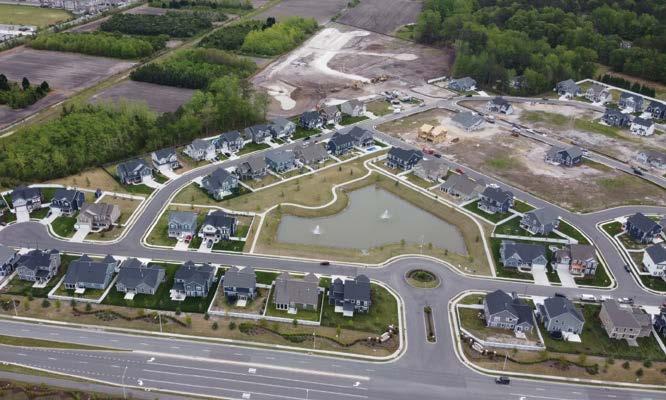
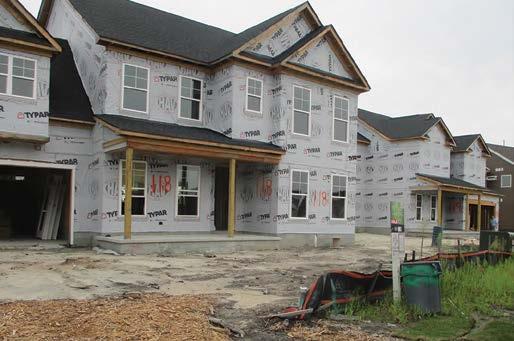
Real Estate
“In the interest of responding to the fast pace of real estate sales, coupled with the pandemic, we have experienced some technological change,” said Windy Crutchfield, REALTOR®, The Real Estate Group. “Many of the tools that were used by the higher-tech agents have become commonplace today— videoconferencing, facetime showings, virtual staging, interactive 3D video tours and electronic documentation are normal tools being used by professional agents. Of course the shortage of housing, coupled with the moratorium on evictions and foreclosures, intensified the increase in prices and reduced many traditional expectations of real estate offers, such as seller-paid closing costs and home inspection contingencies.” From land purchases to condo purchases, real estate has seen the same trends over the past 24 months. “The shortage of housing is a national issue but more acute in some areas of our region where home ownership is in very high demand,” said Crutchfield. “In June 2021, the National Association of Realtors showed the average days on the market was down 58 percent from the year before to 17 days. In the southside of Hampton Roads we are showing 31 days on the market from 49. And in Virginia Beach, we showed a 62 percent drop from last year to 26 days. If you drill down into highdemand neighborhoods, you find even fewer days on the market, such as 12 days in Kings Grant and five days in Mariners Landing.” While most real estate agents in the business for many years have seen periods of high demand, the increasing difficulty of labor, product and supply shortages pose a new twist on the hot market. “With the rapid escalation of prices and heavy demand in 2005–2006, I’m no stranger to “information only” home inspections, escalation clauses, guaranteed appraisals and paying far above asking price,” said Crutchfield. “Back then, we wrote offers in the driveway of the property on the hood of my car. Now we use electronic
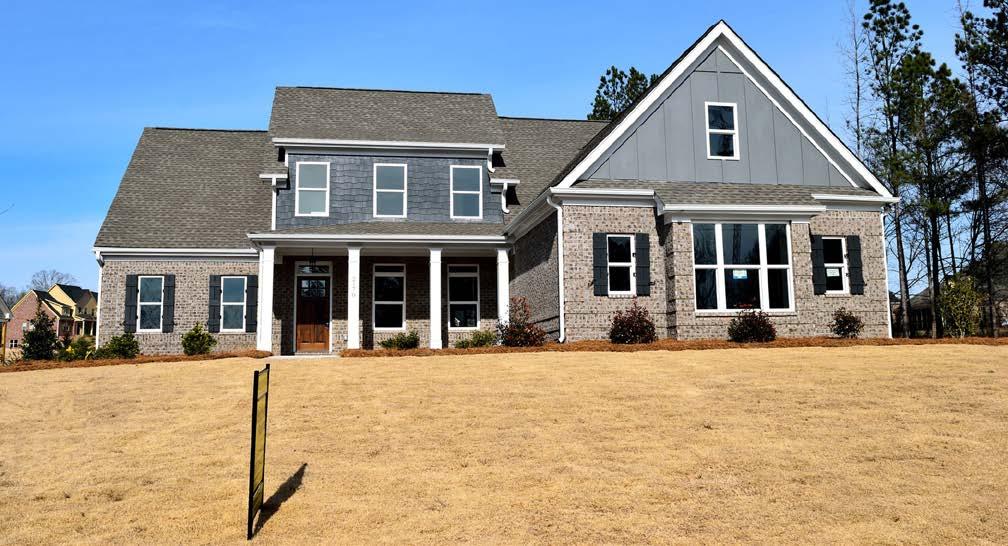
documentation to be prepared to submit an offer as soon as a property is listed, of course many times ‘sight unseen.’ But now some of our buyers are getting even more aggressive in their techniques to win. This of course results in homes being unaffordable for the first-time buyers and them being priced out of the market. The eviction moratoriums in place since the pandemic have hurt property owners and those seeking rentals and skyrocketed rent prices. Finally, material and labor shortages have been a major hindrance for sellers preparing their home for the market or even making repairs requested during home inspections. Appliances have become less of a standard expectation in flipped properties and new construction.” “Preparing buyers ahead of the game for the disappointments that are likely in this environment is critical in managing expectations,” said Crutchfield. “Preparing sellers that even when a buyer offers far above the asking price it does not equate to them being committed to buying a home. Buyer’s remorse is unfortunately common when people are forced to act quickly or lose the property. Video conferencing, virtual staging and 3D technology will likely become more standard because they make more efficient use of time and energy.”
According to Crutchfield, home appreciation will continue to be strong for the rest of this year, around nine percent, and there will continue to be healthy appreciation for the foreseeable future due to the shortage of housing. As the supply chain recovers, more homeowners will make improvements and investors will move more updated properties, yielding better opportunities for first-time buyers. As the moratoriums on evictions lift, the spike in rent prices will soften to a healthy level of rent increases. Longer term, when the pace of home sales returns to a balanced market of 3-to6-months time on the market, the recent increase of active real estate agents (we are currently about 3,000 agents above normal levels) will give way to more career professionals. With so many recent changes, real estate professionals could easily have thoughts of hindsight when thinking about things they would have done differently. “I would have bought stock in Zoom like everyone else,” said Crutchfield. “But truthfully, so much of our industry has moved to video technology that I would have used it to connect with my base. I believe that seeing your real estate agent in person is important to giving peace of mind through the pandemic. In addition, so many buyers have relocated to our area and using video presentations of our properties has become more useful than ever. Also I would have definitely redecorated my home office, since I had to make room for my husband and teens.”
Whether buying or selling, the market is fast-paced.
AGOVER
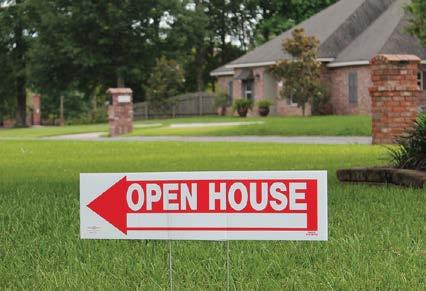
Renovation and Remodeling
Shortages and extreme pricing have become a problem globally. After homeowners spent much more time at home during lockdowns, telecommuting and remote education, they created a surge in demand for renovations and improvements. Suddenly home offices, study areas, the need for outdoor entertainment or beautification of people’s homes became a larger focus. “It is my understanding that many supply houses were instructed to reduce inventory in early 2020 due to possible effects from a worldwide pandemic,” said Andrew Broyles, class A general contractor and owner of Shell Additions. “Low interest rates and the labeling of construction personnel as essential workers proved that to be a bad move. By March of 2020 the remodeling industry was devastated with backordered supplies. Most materials became special order or were inflating in price at such a rapid rate that seasoned remodelers integrated escalation clauses as well as pandemic language, doing away with completion dates if the owner or
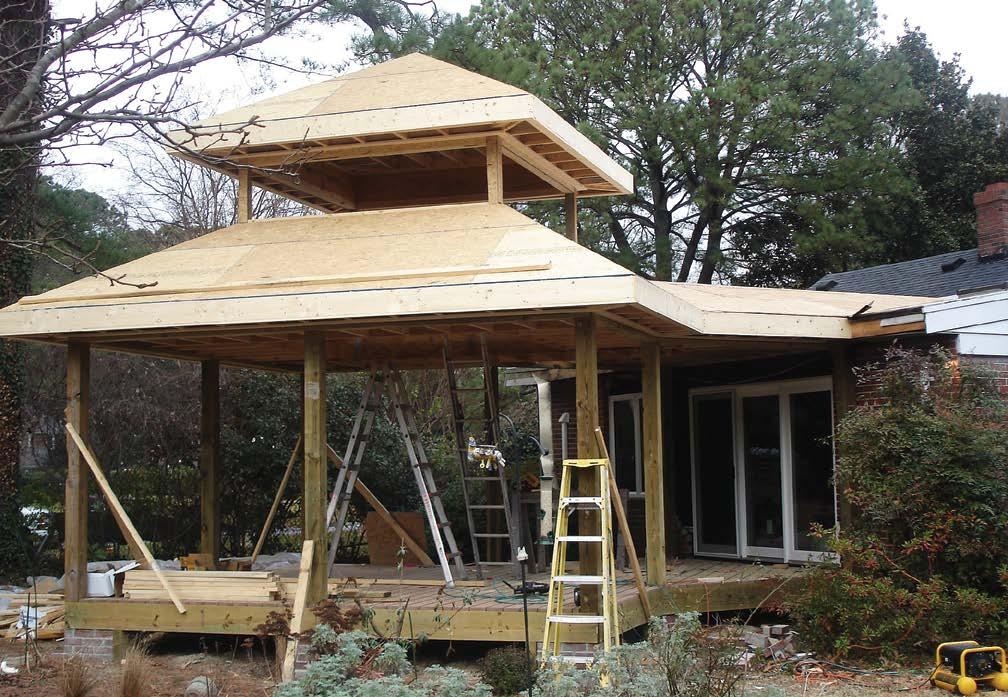
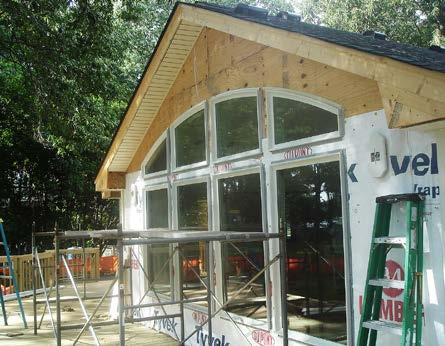
the contractor side became infected with COVID-19.” Additionally, remodeling and renovation contractors have seen availability and pricing difficulties for many reasons. “Vinyl products such as windows, siding, electrical boxes, etc. continue to haunt the remodeler with availability,” said Broyles. “Suppliers tell me this is directly related to the hurricanes in 2020 in the south and the Texas freeze destroying chemical plants associated with plastics manufacturing. Wood products have recently declined in price.”
One of the difficulties or changes not seen before in the home improvement/renovation industry has been the recent lack of skilled, younger workers entering the field. While escalation clauses for material costs may become the norm, the continued unavailability of skilled labor may create an obstacle for even experienced remodelers to lock down labor costs. In the short and long-term future of the industry, Broyles sees the demand and other issues continuing as problematic. “More and more municipalities have begun moving toward engineering seals instead of using prescriptive code for foundations and framing,” said Broyles. “I believe there is a huge shortage of professional design/build remodelers and as long as interest rates are low, that will continue to get worse. I have been in business for 43 years and due to all of the recent issues have decided to retire. To avoid the labor and material issues I may work as a retired carpenter/contractor. I’m still trying to figure that one out.” In hindsight, Broyles has his take on what he would have done differently beginning two years ago. “I would have bought 500,000 2-by-4 studs for $2 and sold them for current wholesale market rate at $9.”
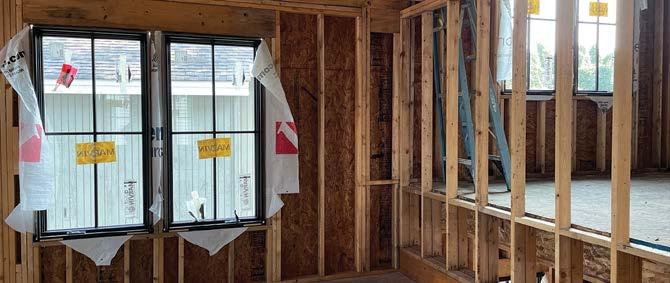
Landscaping
“I am seeing a lot more clients who want to create outdoor rooms and spaces that they can truly relax and unwind in,” said Trista Imrich, landscape designer, horticulturist and owner of Wild Works of Whimsy. “People are putting a lot more money into projects at their homes, both inside and out. I have had a significant number of landscapes around new pools in the past year. There has also been a lot of interest in native plants (my specialty), which has been picking up speed over the last few years. I think there have been a lot of virtual learning opportunities for homeowners to learn about the significance of native plants in their landscape (people are looking for something productive to do at home). Due to the increased demand in materials and contractors, I have had a difficult time helping my clients get lined up with installers for hardscape,
Increased demand for outdoor entertainment spaces resulted in a boom for landscaping and nursery companies.
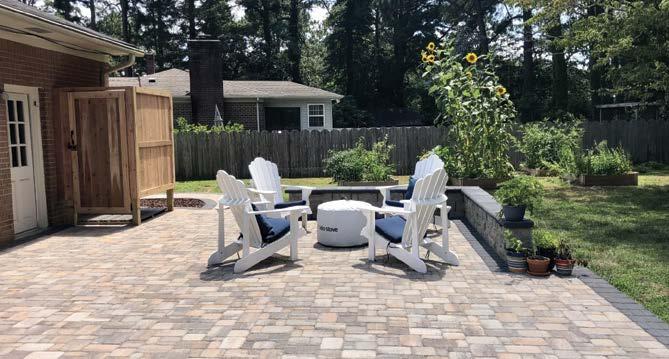

decking, lighting, irrigation, concrete work, etc. I am personally scheduling out 3-4 months for new designs as well.” Many landscape professionals have found it difficult to keep up with client load and now wrestle with the idea of expanding to meet demand with the concern that demand might fall in the future. Most have chosen to simply work more right now. In addition to sprucing up their yards, requests have increased for firepits, outdoor kitchens and bars as clients began entertaining outside year-round during pandemic restrictions. Raised vegetable beds also saw an increase in demand as people found their urban farm talents. Imrich hopes that at least one noticeable change will persist. “I hope native plants are here to stay. I imagine as people start to travel and get out more, the demand will drop a bit, though I hope homeowners have gained an appreciation for their outdoor space. There have been many more gardeners getting started in the past couple years.”
in Williamsburg, VA, says his company plans projects further out than it used to—because of supply chain issues. “Sometimes when a contractor says they can’t start for eight weeks, it’s not because they don’t have room to put you on the
Home Improvement: Supply Chain
If you’re building a new home or trying to renovate the one you’re in, you’ve probably already encountered a barrier in getting things done— limited supplies. From refrigerators to doors to furniture, the supply chains for home building and renovation materials have stretched thin. It has become so hard to source items and materials that Steve Cunningham, incoming chair of the National Association of Home Builders (NAHB) Remodelers and founder of Cunningham Contracting
Our Personal Experience
by Rick Blanton
Building their retirement home from scratch initially semed like a dream, but when the pandemic hit, shortages on everything from structural elements to decor created delays in the final moving goal.
y wife and I decided now that the kids had left, we could move to the beach and build the house we always wanted. Little did we know that lurking in our near future, a pandemic would throw obstacles in front of us and everyone else. I have no doubt that we lucked out, since we actually signed the contract in the early part of the pandemic and didn’t get caught up in the big price increases, and most of our delays were not as bad as others experienced. Our first big delay, the wooden trusses, put us behind about three weeks. At this point I don’t think we understood the delay in the building supply line. We also started hearing about labor shortages as well as delays in appliances and furniture so we started getting to work on that. But before getting that done we heard about our two-week delay on windows. My neighbor had a threemonth window delay and just had his installed. Our granite countertops posed another construction problem. The top we had installed had a fault line across a third of it. Our builder replaced it but did tell us that he had seen decreasing quality control because of work and supply shortages. We also found delays in appliances and furniture. Most of our appliances did make it on time, but our choices became limited and our refrigerator didn’t make it until the day of closing. As far as furniture goes, we had decided to get rid of all of our old and buy new, reflecting our new beach lifestyle. National retailers had delays of 8 to 16 weeks. We are still waiting on one chair that we ordered in June and won’t be here until October. We did have more luck with smaller local stores we found from Virginia Beach down to Myrtle Beach. We put in a lot more work than we planned on, but to tell you the truth we had a lot of fun figuring out “our style” for the house this way. We also found some stores that sold repurposed pieces that really gave us some cool accents in our house. We finished up with Overstock and Wayfair for bedside tables and benches for the bedrooms. Although not the traditional route that we would have taken under normal circumstances, they turned out to be fairly nice. To sum things up we found out that with a little more legwork and thinking outside the box we got around the big delays and moved comfortably into our new home with only a two-month delay from our original move-in date.
Using local shops and online retailers such as Overstock enables shoppers to bypass the long delivery delays from national chains. Everything seen at right was obtained that way.
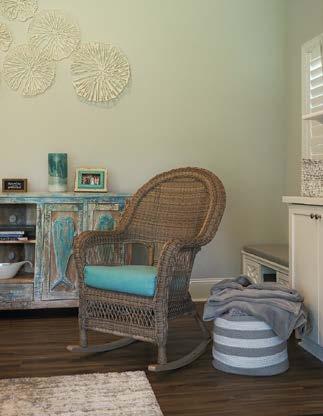
RICK BLANTON
books. It’s because they can’t get the materials,” he said.
Four common shortages:
Lumber
Last October the NAHB found that 77 percent of remodelers reported a framing lumber shortage, with 25 percent reporting a serious shortage. As demand for new construction boomed, lumber supply chains took blows from multiple angles. COVID19-related lockdowns and closures, followed by new safety measures taken for workers, affected lumber mills. Plus, 2020’s West Coast wildfires sapped supply. In Oregon alone, fire destroyed trees worth over 15 billion feet of lumber, according to the Oregon Forest & Industry Council. That’s enough wood to build 1 million homes. In response to low supply, lumber prices have shot up. Some 90 percent of surveyed home builders reported a shortage of plywood, and nearly as many a shortage of windows and doors, according to a recent NAHB survey that also found that the situation has deteriorated “drastically” since the same time last year. Shortages also impacted a broader-than-ever range of products, including tile and cabinets, as well as plastic, stainless steel, semiconductors and other components essential to the manufacturing of refrigerators, ovens, dishwashers, microwaves, washers and dryers.
Windows and Doors
Following lumber, windows and doors have become the secondhardest items to find, according to the NAHB. The survey found 65 percent of respondents reported a shortage, with 46 percent reporting a serious shortage. Part of this comes from demand, of course, but Sucharita Kodali, eCommerce expert and VP retail analyst at Forrester, a market research company, says it’s also because there just aren’t many window and door manufacturers in the U.S. It also doesn’t make much sense for manufacturers to expand their operations to meet what could be a temporary crush of orders. “They don’t want to invest in a new factory because this pandemic is going to end and at that point, they’re stuck with this huge capital expense,” said Kodali. Manufacturers will more likely build a backlog and tell customers “You get your door when you get your door.” When it comes to doors, you can either use whatever stock exists at local home stores, or try to salvage a door from someone else who’s renovating and doesn’t need it anymore—or look to an architectural salvage company. Meanwhile, Cunningham said his company builds a lot of threeseason porches, and he has seen window lead times stretch from a typical three weeks to six months or more. “They were that far behind. It’s affected everything.” Windows are harder, especially if you’re ordering custom sizes. Cunningham cautions to be very open to the timeline your contractor presents because they’re trying to be realistic with how long it will take to order things in.
Appliances
If you’re looking at a kitchen renovation, things like ovens, refrigerators and dishwashers have become hard to find. You can get a shipping date or the possibility of availability, but there are a lot of people vying for those appliances,” Cunningham says. In June, appliance shipments were down 7 percent compared to the year before, according to the Association of Home Appliance Manufacturers (AHAM). That number is improving: shipments rose by a fifth in the fourth quarter of 2020. Cunningham encourages clients to be flexible and pick a few different possibilities for what could work instead of becoming fixated on just one appliance model. Some customers are so frustrated by delays that they grab whatever is in stock at their local home or department store. Then they use that appliance until what they ordered arrives, which works in a pinch, but isn’t the cheapest option. You also can look into used, open-box, or “scratch and dent.” These are new items that may have a small blemish but still work, or were returned but are now discontinued and can’t be sold at full price. American Freight (which used to be Sears Outlet) is now online. You also can find some of these items on Amazon.
Furniture
You have a few options. You can scout local furniture store floor models they want to sell in order to make way for new items. For used furniture, you can go the usual route of Craigslist and Facebook Marketplace. Furniture also faces the same supply-and-demand crunch as appliances because of manufacturing disruptions. Some 97 percent of supply chain professionals faced a supply chain disruption due to Covid-19, according to the “How Now? Supply Chain Confidence Index” report, and as a result, 73 percent have been revising their supply chain strategies. Knowing this
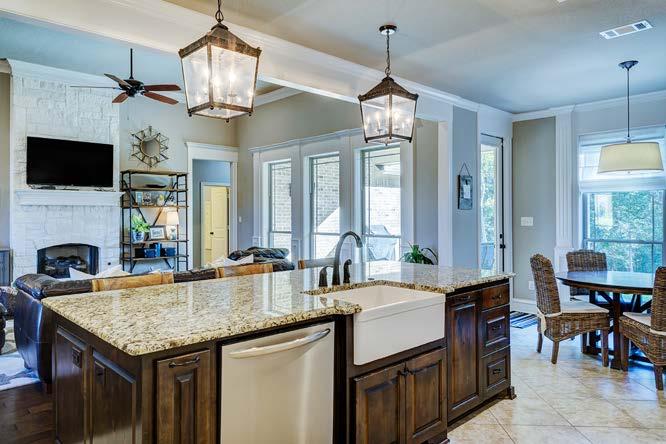
Whether building from the ground up or tackling home renovations, current shortages—and rising costs—mean thinking creatively can still get you stunning results.
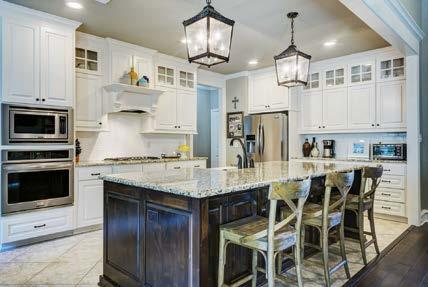
might seem helpful, but probably won’t help you if you need a couch, chair or bookcase right now. Try looking for local artisans who make custom items, too, and won’t have the same kind of backlog as a national chain. You also can find vintage furniture and have those items refinished or have new cushions made for things like used couches and chairs. Supply chain disruptions continue to wreak havoc on material prices, product backlogs, freight costs and kitchen/bath project timelines, although current conditions are likely a temporary speed bump rather than a lasting roadblock to future market growth. That’s the view of most construction market experts, including leading manufacturers, who forecast that the current challenges impacting the kitchen and bath product supply chains are transitory rather than permanent, and should dissipate, for the most part, by the same time next year. Product suppliers—as well as kitchen/bath designers, distributors, home builders, remodelers and others—have faced a year-long “perfect storm” of surging demand coupled with materials shortages, logistical challenges and global factory shutdowns wrought by the COVID-19 pandemic. Specifically, while remodeling demand soars as vaccination rates increase and emerging lifestyles spark reconfigured home layouts, supplychain disruptions have resulted in acute shortages of critical building products. Supply constraints, at the same time, have caused material costs to soar. According to the National Association of Home Builders, materials shortages are currently more widespread than at any time since the 1990s, while higher costs coupled with shortages have seen builder confidence in the market decline to its lowest level in a year.
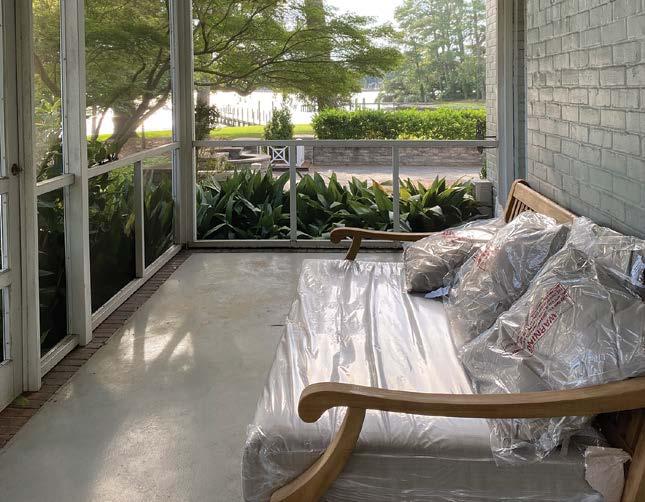
Our Personal Experience
by Molly Samuels
The Samuels family had a unique situation that gave them insight into market and industry changes over the past two years. They purchased a home in April 2018 in Norfolk and then sold that home and purchased a new one, 900 feet away, in March 2021. Molly Samuels shares their experiences throughout the buying and renovation process for both homes.
ur 2018 home purchase was a great house in a superdesirable neighborhood, so we knew it would be a waste of time offering much below the asking price. We had the fortune to see the house the day before the listing hit the MLS, but the listing agent was showing it several times a day and we knew of two other very interested couples. We offered $10,000 below the asking price and asked for the sellers to pay closing. We had no contingencies, we had flexibility with closing and possession dates, and our financing was in order. We ended up only $2,000 below list price, with the sellers paying closing. Our most recent move occurred within the same neighborhood and we had looked for waterfront property for some time. We had awareness of market trends. We knew if we saw something we liked we wouldn’t have time to hem and haw. We had the fortune again to meet the sellers before they listed. They told us what their listing price would be and we had our agent write up a full price offer, contingent only on inspection. They needed to rent back for two months and we had the flexibility to accommodate their schedule. Our 2018 home purchase was a fantastic house but we had hurried to
Home improvement keyword of 2021: Delays. From furniture deliveries to painting, everything takes longer.
get out of a city where we felt crime becoming increasingly problematic. Shortly after moving, we realized we really could have purchased on the water in the same price range. COVID-19 sealed the deal. Being home for—I’ve lost track now—18 months? Working from home, schooling from home, vacationing at home, we really agreed as a family that we needed to rip the proverbial Band-Aid off and start living our waterfront dream. Now, selling our other house has a crazy story much more indicative of the current market. Our buyers, who we are super-excited to now call friends, were moving from out of state and had very little time in Virginia to shop. They had made several offers and faced out-bidding again and again. Our agent sent them a picture of the front of the house and within two hours we had a fully ratified contract for the full asking price with no contingencies and the buyer paying all closing costs. There is no comparison to our experience between the 2018 house renovations and decorating and the 2021 house. None. Our 2018 home purchase was a significantly larger home from our previous one and we bought a good deal of new furniture. Everything was readily available and delivered within a week to 10 days. We didn’t do a lot of remodeling but the painting and small projects that we did were super-easy. We found contractors easily and they finished jobs predictably. We couldn’t have imagined what the 2021 move would be like. For starters, moving companies had bookings four to eight weeks out. We haven’t bought much furniture but the few things we have purchased have been hard to find and backordered for weeks, in some cases months. We worked with a general contractor that we really love, but he is torn in a hundred directions. Getting painters was worse than pulling teeth and their one-week job took three weeks. Once they were finally in the house and got the prep work done, they couldn’t get paint—utter madness. There isn’t a landscaper to be found. We were fortunate that the previous owner’s landscaper wanted to stay, but we also wanted to do a very thorough spring cleanup at the old house before the buyers moved in. We had a great company do the work, but even with two months’ notice, the best he could do was the week after closing. We’ve had a lot of other subcontractors and they are all insanely busy, but they showed up.

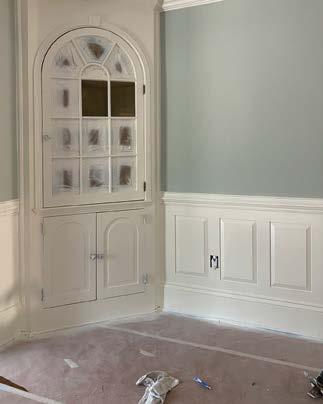
Waterfront views made the process worth it in the end.
Is there anything you noticed that changed in your experience over the last 24 months?
Honestly, I think we have all handled COVID-19 differently. Different people have adapted in different ways. My own outlook seems to change from day to day. I think we are all exhausted. Sometimes that manifests in some really bad attitudes and we forget our manners. But the opposite is also happening all around us. COVID-19 has made many of us look more carefully at what is important, what really matters. I have found a lot of the people who have played a role in this move are friendlier than ever. Contractors seem to enjoy a little small talk, vendors are genuinely happy to see you in their shops. Moving is exhausting, but the walls will get painted, the boxes will get unpacked and one day when my husband asks where something is, I will have an answer. For now I am happy just to sit and watch my teenage son playing with his dog on the river while the sunsets and the tides roll in. If I could do it all over again, I think I’d try to find a house on the river the first time, and I would absolutely worry less about the little details that really don’t matter.










